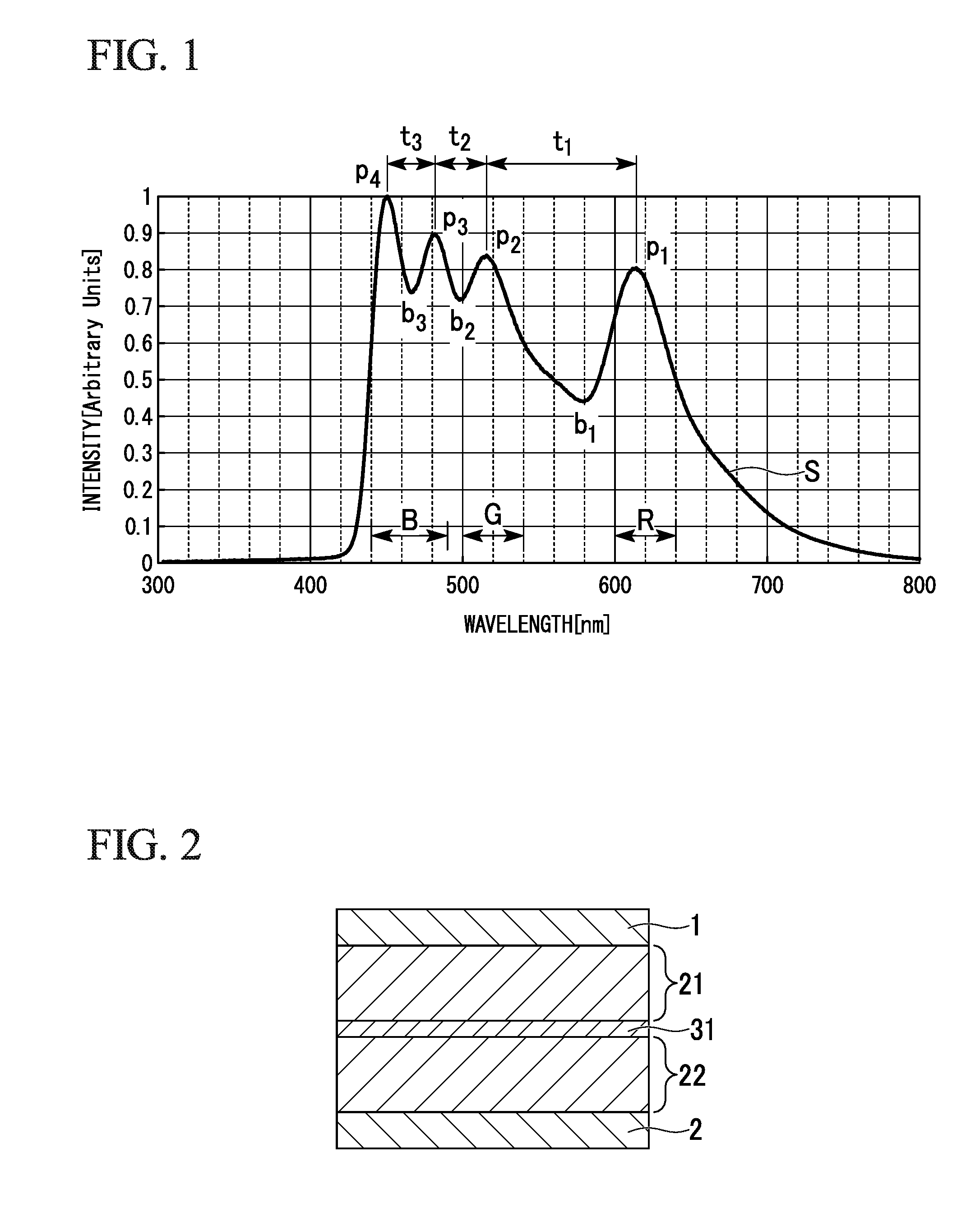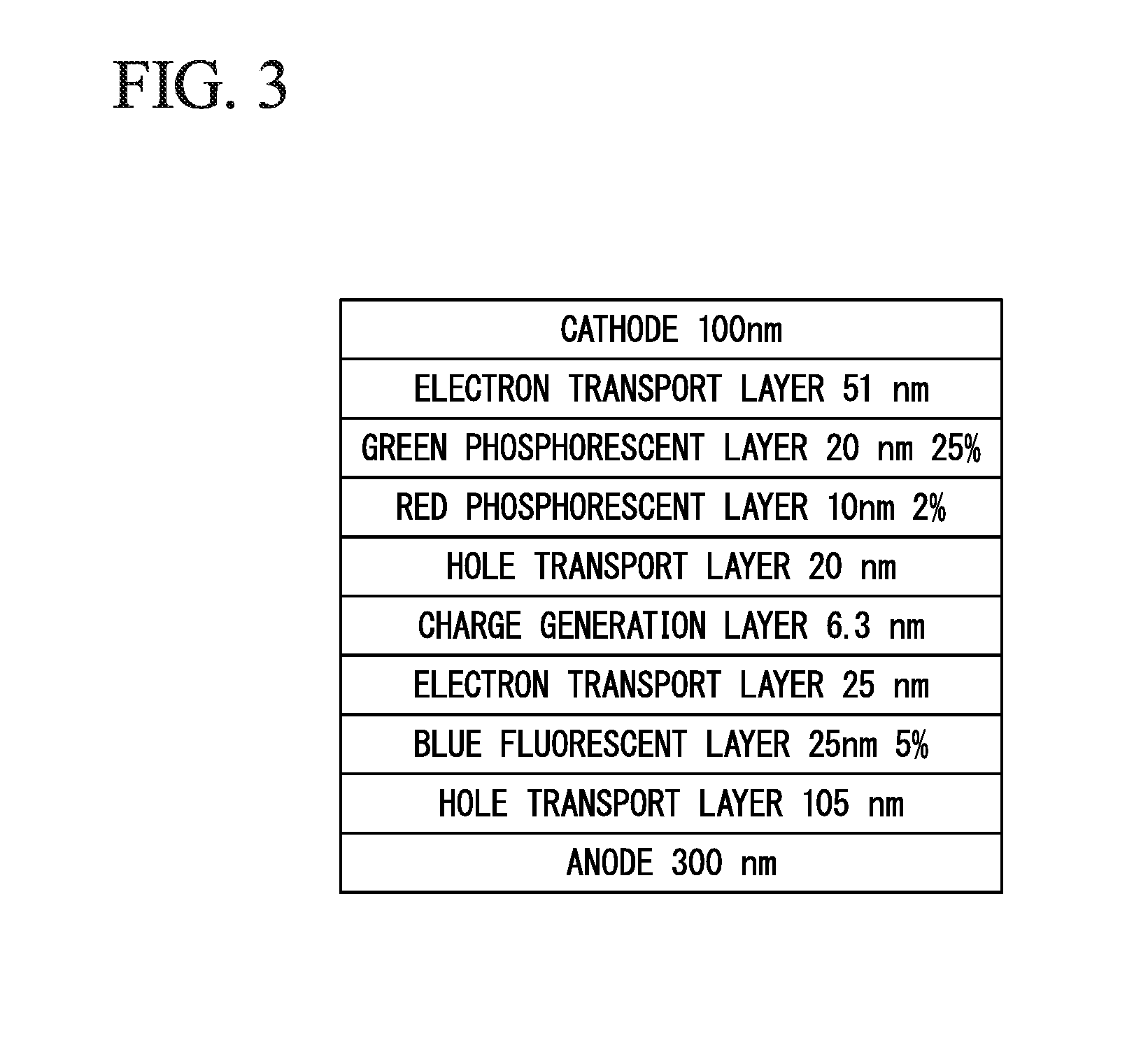Organic electroluminescent element and lighting device
a technology of organic el elements and lighting devices, which is applied in the direction of electroluminescent light sources, organic semiconductor devices, thermoelectric devices, etc., can solve the problems of insufficient control of the white light emitted from the three light emitting layers (red, blue, green) in order to obtain high color rendering properties, and the organic el element according to the related art does not have a sufficient performance as a light source of a lighting device, so as to achieve high color rendering properties
- Summary
- Abstract
- Description
- Claims
- Application Information
AI Technical Summary
Benefits of technology
Problems solved by technology
Method used
Image
Examples
example 1
[0104]In Example 1, an organic EL element having an element structure shown in FIG. 3 was manufactured. Specifically, first, a soda lime glass substrate which had a thickness of 0.7 mm and on which an ITO film having a thickness of 300 nm, a width of 2 mm, and a sheet resistance of about 10 Ω / □ was formed was prepared. Then, ultrasonic cleaning was performed on the substrate for 5 minutes with a neutral detergent, ion-exchange water, acetone, and isopropyl alcohol. Then, spin-drying and UV / O3 treatment were sequentially performed on the substrate.
[0105]Then, deposition crucibles (made of tantalum or alumina) of a vapor deposition apparatus were filled with materials forming the layers shown in FIG. 3. Then, the substrate was set in the vapor deposition apparatus. Power was supplied to heat the deposition crucibles in a reduced pressure atmosphere with a degree of vacuum of 1×10−4 Pa or less and each layer was deposited with a predetermined thickness at a deposition speed of 0.1 nm / s...
example 2
[0108]In Example 2, an organic EL element having an element structure shown in FIG. 5 was manufactured by the same manufacturing method as that in Example 1. Then, the organic EL element according to Example 2 was evaluated by the same method as that in Example 1. The evaluation result is shown in FIG. 6.
example 3
[0109]In Example 3, an organic EL element having an element structure shown in FIG. 7 was manufactured by the same manufacturing method as that in Example 1. Then, the organic EL element according to Example 3 was evaluated by the same method as that in Example 1. The evaluation result is shown in FIG. 8.
PUM
 Login to View More
Login to View More Abstract
Description
Claims
Application Information
 Login to View More
Login to View More - R&D
- Intellectual Property
- Life Sciences
- Materials
- Tech Scout
- Unparalleled Data Quality
- Higher Quality Content
- 60% Fewer Hallucinations
Browse by: Latest US Patents, China's latest patents, Technical Efficacy Thesaurus, Application Domain, Technology Topic, Popular Technical Reports.
© 2025 PatSnap. All rights reserved.Legal|Privacy policy|Modern Slavery Act Transparency Statement|Sitemap|About US| Contact US: help@patsnap.com



